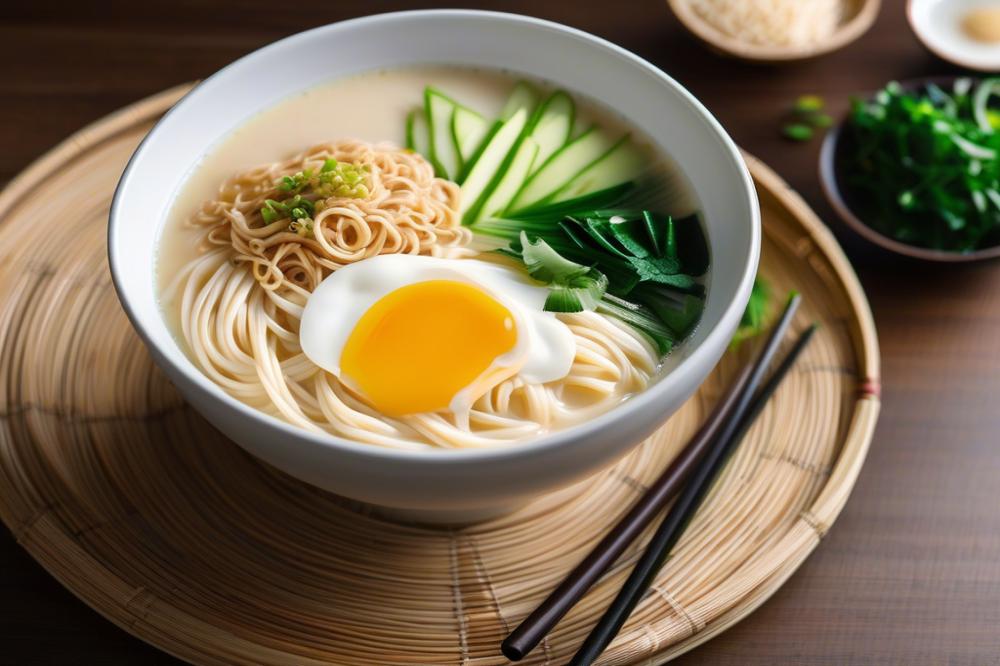Introduction
Kongguksu is a traditional Korean dish celebrated for its freshness, especially during the summer months. This cold noodle dish features homemade noodles made from soy milk, offering a delightful balance of flavors and textures. It provides a nourishing escape from the heat, making it a popular choice among locals and visitors alike.
Korean cuisine embraces seasonal ingredients, and Kongguksu exemplifies this philosophy perfectly. With its rich, creamy consistency, the dish showcases the versatility of plant-based foods. Many people enjoy Kongguksu when temperatures soar, finding comfort in its refreshing appeal.
Not only is it satisfying, but this vegan recipe also aligns with the growing trend of healthy eating. The cold noodles are made from nutritious beans, making this a wholesome meal for anyone seeking to lighten their diet. When prepared at home, Kongguksu offers a truly authentic experience that highlights the dish’s cultural significance. Overall, it stands as a testament to the deliciousness of cold noodles and the wonderful world of Korean summer food.
Kongguksu: A Classic Recipe
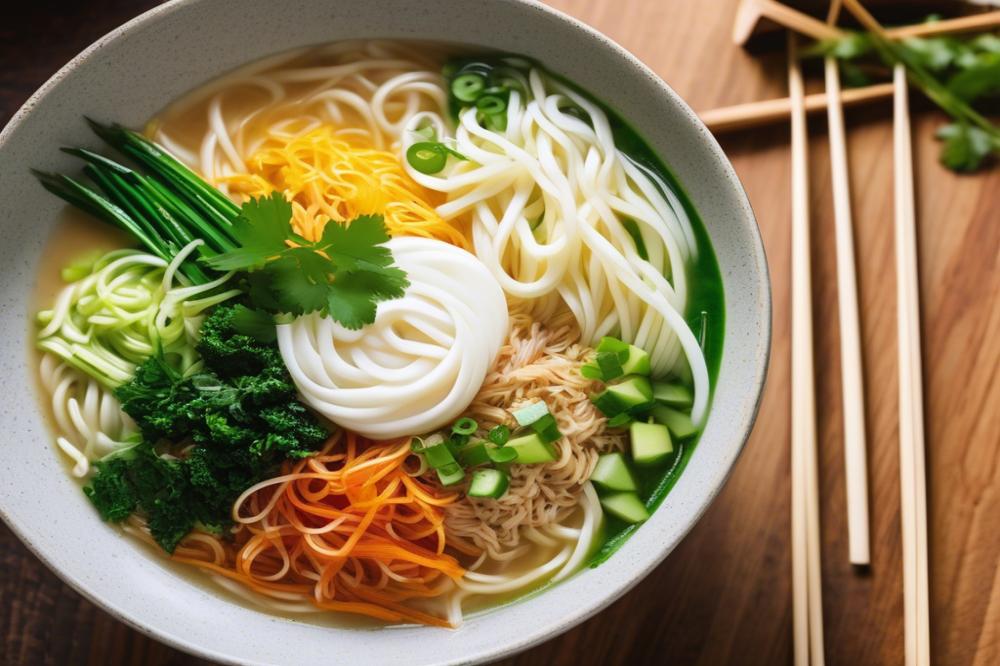

Kongguksu is a delightful dish that showcases the essence of Korean cuisine. Made with soy milk and noodles, it stands out as a refreshing summer dish. This traditional recipe has roots that run deep in Korean culinary history, often enjoyed during the hottest months of the year. Families create and share this meal, making it a symbol of togetherness and comfort.
The preparation of cold noodles is simple yet satisfying. Noodles made from beans, known as bean noodles, are cooked until they are tender. Then, they are cooled down and served in a chilled bowl of creamy soy milk. This combination creates a lovely interplay of textures. Garnishes like cucumber, sesame seeds, and occasionally cherry tomatoes add color and flavor. Each element contributes to a beautiful presentation, making the dish appealing to both the eyes and the palate.
What makes this dish even more inviting is its plant-based nature. Many people are shifting towards healthier eating, and a vegan recipe like this fits perfectly into that lifestyle. Kongguksu offers a nutritious and satisfying meal without any animal products. The use of homemade noodles adds a personal touch, making the dish undeniably authentic.
Enjoying these cold noodles on a hot day is truly a refreshing experience. The taste of the smooth soy milk along with the delicate noodles brings joy to many. A bowl of this meal not only nourishes the body but also refreshes the spirit. It’s a delightful way to embrace Korean culture while enjoying the benefits of plant-based ingredients.
Ingredients List and Nutritional Information
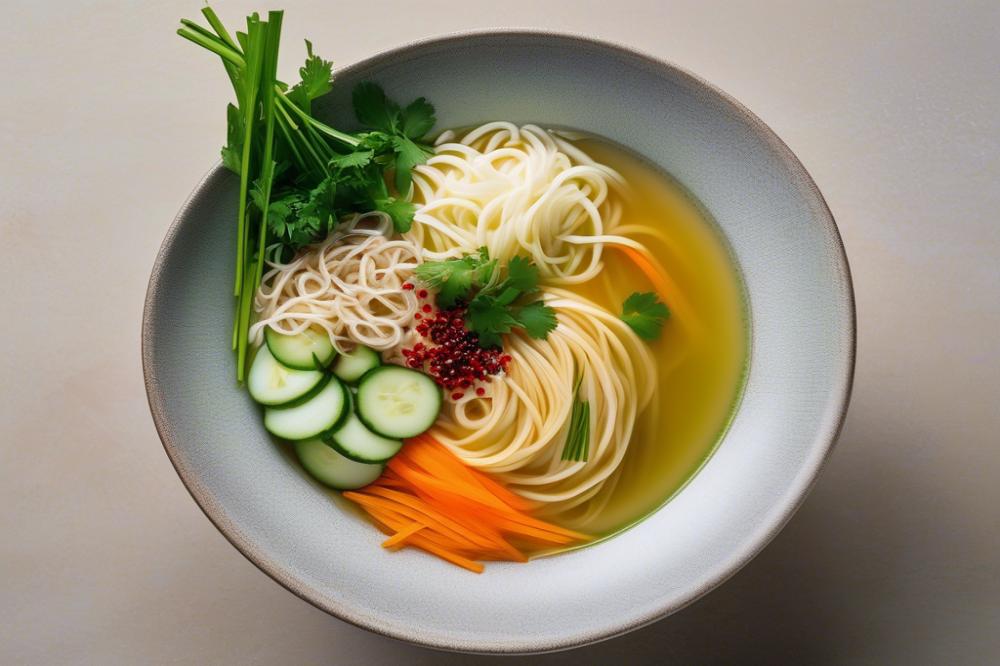

To create the perfect traditional recipe for Kongguksu, gather the following ingredients:
- 1 cup dried white soybeans
- 4 cups water (for soaking and blending)
- 300 grams of Korean wheat noodles (or homemade noodles)
- Salt, to taste
- Optional toppings:
- Sliced cucumber
- Sesame seeds
- Chopped scallions
- Ice cubes
Nutritional Information
Dried white soybeans are an excellent source of protein. One cup contains about 28 grams of protein, making it a great choice for anyone interested in healthy eating. They also provide dietary fiber, with around 17 grams per cup, which aids digestion. Vitamins such as B vitamins and minerals like magnesium and potassium can also be found in soybeans.
Water keeps ingredients blended smoothly, but it doesn’t contain calories or nutrients. Korean wheat noodles add approximately 10 grams of protein per 100 grams while serving as good carbohydrates. Including salt enhances flavor; however, it’s wise to use it sparingly, especially for those watching sodium intake.
Optional toppings like sliced cucumber provide hydration and crunch. Cucumbers are low in calories but contain vitamins A and K. Sesame seeds, often sprinkled on top, offer healthy fats and minerals like calcium. They’re a great addition for those following a vegan recipe. Chopped scallions enhance flavor while also providing vitamin C. Ice cubes aren’t just for chill; they make this summer dish incredibly refreshing.
Homemade Noodles vs Store-Bought
Choosing homemade noodles can yield a fresher taste and better texture. Making noodles from scratch allows for control over ingredients, making it easier to create a plant-based option without additives. Store-bought noodles may have preservatives. However, they provide convenience for busy schedules.
Homemade options often have a unique chewiness that elevates the dish. When creating variations, these noodle types can be adapted more easily. Ultimately, your choice will depend on time and personal preference, but both options cater to satisfying summer meals. Enjoying Kongguksu with either noodle type brings a delightful touch of Korean cuisine to your table.
Cooking Instructions
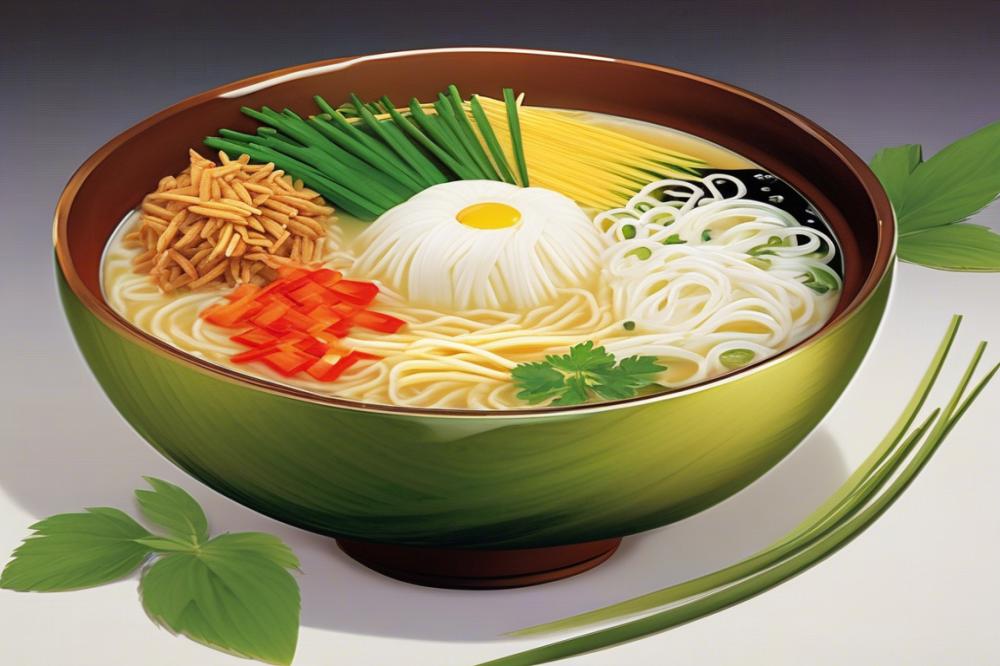

Step-by-step method to prepare the soy milk broth
Soaking the soybeans overnight is the first step. Use about one cup of dried soybeans for a rich flavor. Once soaked, rinse them well under cold water. This process removes any impurities. After rinsing, blend the soaked soybeans with four cups of fresh water in a powerful blender. Blend until the mixture becomes smooth and creamy.
Next, strain the blended mixture through a fine mesh sieve or cheesecloth into a large bowl. This action separates the soy milk from the soybean pulp. The remaining pulp can be saved for other recipes or discarded. You should end up with about four cups of smooth soy milk. The fragrant aroma will fill your kitchen, hinting at the delicious cold noodles to come.
Preparing the noodles
To prepare the noodles, you can either use store-bought wheat noodles or make homemade noodles. If using store-bought, follow the package instructions carefully. Typically, boil them in salted water for about five to six minutes until tender. Drain and rinse under cold water to stop the cooking process. This technique prevents the noodles from becoming mushy.
For homemade noodles, combine flour and water to form a dough. Knead the dough until it’s smooth. Roll it out into thin sheets and cut them into your desired width. These homemade noodles will add a special touch to your dish. They’ll pair wonderfully with the soy milk broth and make it a real treat.
Combining noodles with the soy milk base
Once the noodles are ready, it’s time to combine them with the soy milk. Pour the prepared soy milk broth into a large bowl. Add the cooked noodles into the broth, allowing them to soak up the flavors. Season with a little salt to enhance the taste. A light hand is recommended, especially if you’re aiming for a health-conscious, plant-based meal.
Serving suggestions with optional toppings
For added flavor and texture, consider several topping options. Chopped scallions, sliced cucumber, or sesame seeds can elevate the dish. You might also include fresh herbs like mint or cilantro for a refreshing touch. A drizzle of sesame oil or a sprinkle of chili flakes can bring a bit of heat. These toppings not only add visual appeal but also enhance the overall experience.
This traditional recipe for cold noodles is perfect for hot summer days. Each bowl offers a delightful and nourishing meal, perfect for those embracing healthy eating or seeking vegan options. Enjoy your creation as a refreshing summer dish that highlights the beauty of Korean cuisine.
Cultural Significance and Variations
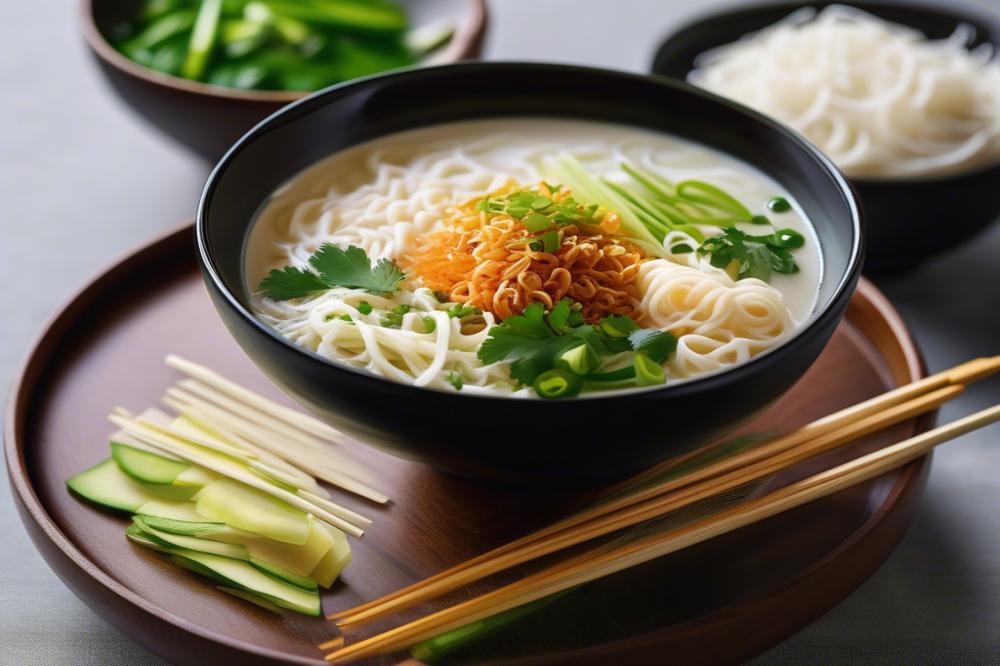

Kongguksu is a beloved dish in Korean culture, known as a summer staple. It has a rich history that goes back many centuries. Originally made as a way to cool off during hot weather, this dish uses soy milk as its base, making it a refreshing option for warm days. Traditionally enjoyed during the hottest months, it showcases the importance of seasonal eating in Korean cuisine. Over time, this dish evolved to reflect regional ingredients and personal tastes.
Different areas in Korea have their own takes on this classic recipe. In the south, for example, people often add various toppings such as pickled vegetables or fresh herbs to elevate the flavor. Meanwhile, in the north, the dish might include parts of local seafood or different kinds of vegetables. Each variation tells a story, reflecting the local environment and what ingredients are available. Regardless of the region, this version of cold noodles remains a nutritious and satisfying meal.
When exploring traditional Korean noodle dishes, Kongguksu stands out, but it’s not alone. Other types of cold noodles, such as Naengmyeon or Bibim Naengmyeon, also offer refreshing meals during the heat of summer. Naengmyeon is typically served with broth, while Bibim Naengmyeon features a spicy sauce. Homemade noodles from wheat or rice provide an interesting contrast to the bean noodles used in Kongguksu. Each dish serves its purpose, contributing to the diversity of Korean food. They also highlight healthy eating practices common in Korean culinary traditions.
For anyone interested in plant-based options, Kongguksu is an excellent choice. This vegan recipe not only suits various diets, but also offers numerous health benefits. Many Koreans continue to enjoy this dish, appreciating its flavor and nutritional value. Such meals are often sought for their refreshing qualities, especially when the weather heats up. The harmony of taste and health makes Kongguksu a favorite for many families.
Final Thoughts on Kongguksu and Healthy Eating
This refreshing summer dish offers numerous health benefits. Made with soy milk and fresh vegetables, it provides a wealth of nutrients. The protein in soybeans supports muscle health, while the vitamins from cucumbers and melons add hydration. Overall, this meal is light yet fulfilling, making it an excellent choice for warm weather.
Homemade versions allow you to customize the flavors and ingredients to suit your taste. Why not try your hand at making it? Gathering fresh ingredients and preparing them in your kitchen can be both fun and rewarding. The process might seem daunting, but cooking traditional recipes is a great way to connect with culture and history.
Maintaining a focus on healthy eating is vital in today’s world. Many people rush to pick convenience foods. Embracing methods like these can lead to better choices that nourish the body. Korean cuisine, with its emphasis on natural ingredients, offers plenty of inspiration. Every dish has a story and contributes to a diverse culinary landscape.
In the end, preparing such a dish as this is more than just a meal; it is an experience. Enjoy the freshness of the ingredients and the satisfaction of creating a delicious bowl. Your journey with food can enrich your life and promote well-being. So why not celebrate these traditional flavors? Dive into preparing your plate of goodness!

